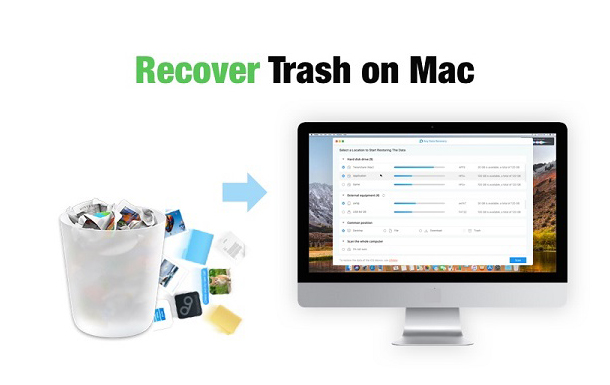
And since it is fault-tolerant (which gives it the capability of scanning around bad sectors), it can even be used to recover data from faulty media, which is sometimes useful even if the files have not been deleted, because it will successfully read and extract the files irrespectively. (Technically speaking: The only requirement is that OS X provides a POSIX node, for example /dev/rdisk3). In general It will work on anything that appears in Disk Utility. For data recovery of digital cameras it is sometimes preferable to put the camera’s SD card into an SD card reader rather than plugging the camera in with a USB cable, but it depends on the camera. OS X does not even necessarily have to be able to mount the device, and that way it can work on devices which do not show up in the Finder.

#HOW TO RECOVER LOST FILE ON MAC ANDROID#
It works on hard disks, USB flash sticks, USB hard disks, Intel Optane storage, & SSD’s, SD Cards, Apple’s APFS disk format, digital cameras, Android phones & tablets, or anything else that can be plugged into a Mac. Now the only requirement for a deleted file to be recoverable is for it to be present, irrespective of the filesystem. This has the advantage of making the recovery more robust and consistent because it is no longer dependent on the filesystem, so it makes no difference if a disk has been formatted or not. Now data recovery has become about pattern recognition of individual file types.
#HOW TO RECOVER LOST FILE ON MAC HOW TO#
How to recover deleted files on your Mac in modern times This method is generally not possible these days, because filesystems have become more complex, and also because when it comes to deleted file recovery people demand functionality above all else. So while it was not so reliable, when it did work it could be very convenient. Sometimes it would result that getting files back was a quick and painless process. It did have some advantages the folder layout and filenames would sometimes be preserved.

If the disk had been formatted, then nothing would be recoverable. Likewise if the filesystem was heavily corrupted or if it had been formatted, that would often mean that no file recovery would be possible. If the filesystem had been heavily modified after the file deletion had taken place, then there would be less chances of being able to undo that deletion. The success or failure of the file recovery attempt was also generally based on the state of the filesystem at the time. In this way, each different filesystem would be developed for and interpreted in its own individual way, and each filesystem would have its own success rates and caveats. If it were a Mac OS disk for example, then the HFS+ filesystem would be interpreted by the software, and an analysis would be made to try to determine what data was previously present before the deletion was performed. Browsing deleted files in Mac Data Recovery Guruĭeleted file recovery used to be done by reading the filesystem of the disk.


 0 kommentar(er)
0 kommentar(er)
